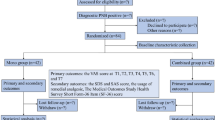Abstract
Pudendal neuralgia is characterized by chronic pain or discomfort in the area innervated by the pudendal nerve, with no obvious cause. A successful pudendal nerve block is crucial for the diagnosis of pudendal neuralgia. Blind or fluoroscopy-guided pudendal nerve blocks have been conventionally used for diagnosis and treatment; however, ultrasound-guided pudendal nerve blocks were also reported recently. With regard to the achievement of long-term effects, although pulsed radiofrequency performed under fluoroscopic guidance has been reported, that performed under ultrasound guidance is not well reported. This report describes two cases of pudendal neuralgia that were successfully managed using ultrasound-guided pulsed radiofrequency and presents a literature review of pudendal nerve block techniques. However, in the management of chronic neuropathic pain, physicians should keep in mind that the placebo effect related to invasive approaches must not be neglected.


Similar content being viewed by others
References
Benson JT, Griffis K. Pudendal neuralgia, a severe pain syndrome. Am J Obstet Gynecol. 2005;192:1663–8.
Robert R, Prat-Pradal D, Labat JJ, Bensignor M, Raoul S, Rebai R, Leborgne J. Anatomic basis of chronic perineal pain: role of the pudendal nerve. Surg Radiol Anat. 1998;20:93–8.
Tagliafico A, Perez MM, Martinoli C. High-resolution ultrasound of the pudendal nerve: normal anatomy. Muscle Nerve. 2013;47:403–8.
Bellingham GA, Bhatia A, Chan CW, Peng PW. Randomized controlled trial comparing pudendal nerve block under ultrasound and fluoroscopic guidance. Reg Anesth Pain Med. 2012;37:262–6.
Rhame EE, Levey KA, Gharibo CG. Successful treatment of refractory pudendal neuralgia with pulsed radiofrequency. Pain Phys. 2009;12:633–8.
Dodson MG, Friedrich EG Jr. Psychosomatic vulvovaginitis. Obstet Gynecol. 1978;51:23S–5S.
Turner MLC, Marinoff SC. Pudendal neuralgia. Am J Obstet Gynecol. 1991;165:1233–6.
Snooks SJ, Henry MM, Swash M. Fecal incontinence due to external sphincter division in childbirth is associated with damage to the innervation of the pelvic floor musculature: a double pathology. Br J Obstet Gynecol. 1985;92:824–8.
Filler AG. Diagnosis and treatment of pudendal nerve entrapment syndrome subtypes: imaging, injections, and minimal access surgery. Neurosurg Focus. 2009;26:E9.
Raj PP. Anatomy and technique of pudendal nerve block. In: Raj PP, editor. Chronic pain handbook of regional anesthesia. New York: Churchill-Livingstone; 1985. p. 473.
Choi SS, Lee PB, Kim YC, Kim HJ, Lee SC. C-arm-guided pudendal nerve block: a new technique. Int J Clin Pract. 2006;60:553–6.
Bellingham GA, Peng PWH. Ultrasound-guided interventional procedures for chronic pelvic pain. Tech Reg Anesth Pain Manag. 2009;13:171–8.
Podhajsky RJ, Sekiguchi Y, Kikuchi S, Myers RR. The histologic effects of pulsed and continuous radiofrequency lesions at 42 °C to rat dorsal root ganglion and sciatic nerve. Spine (Phila Pa 1976). 2005;30:1008–13.
Govind J, Bogduk N. Neurolytic blockade for noncancer pain. In: Fishman SM, Ballantyne JC, Rathmell JP, editors. Bonica’s management of pain. Philadelphia: Lippincott Williams & Wilkins; 2010. p. 1467–85.
Sluijter ME, Van Kleef M. Characteristics and mode of action of radiofrequency lesions. Curr Pain Headache Rep. 1998;2:143–50.
Acknowledgments
This work was supported by Wonkwang University 2015.
Author information
Authors and Affiliations
Corresponding author
About this article
Cite this article
Hong, MJ., Kim, YD., Park, JK. et al. Management of pudendal neuralgia using ultrasound-guided pulsed radiofrequency: a report of two cases and discussion of pudendal nerve block techniques. J Anesth 30, 356–359 (2016). https://doi.org/10.1007/s00540-015-2121-x
Received:
Accepted:
Published:
Issue Date:
DOI: https://doi.org/10.1007/s00540-015-2121-x




